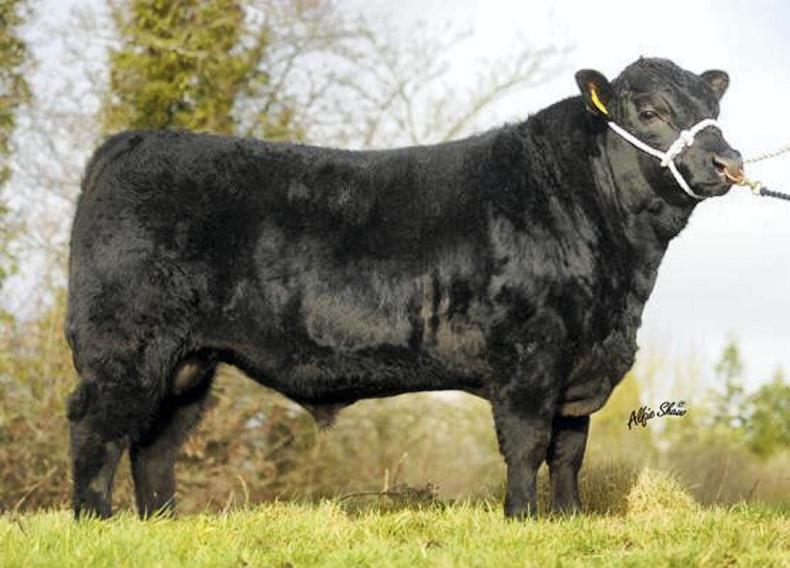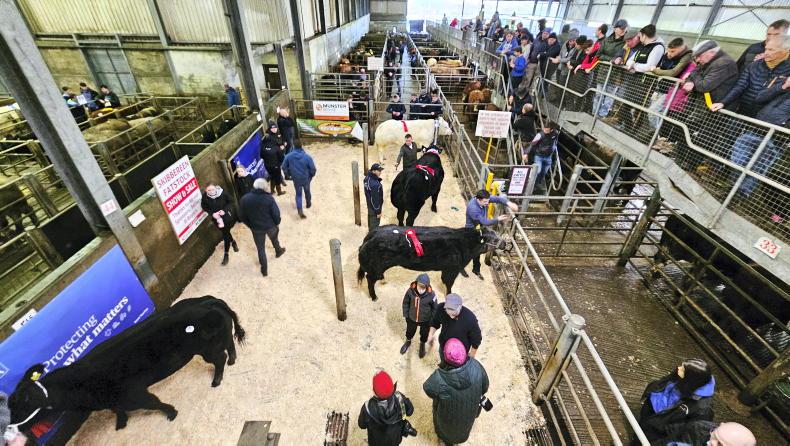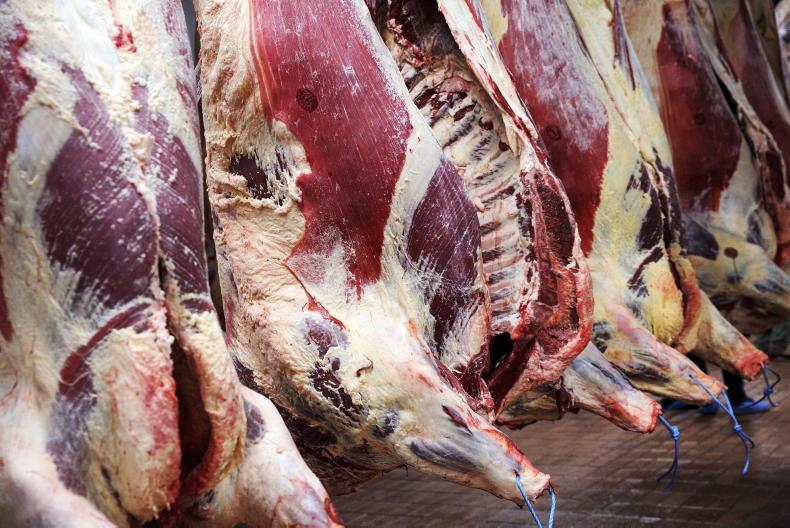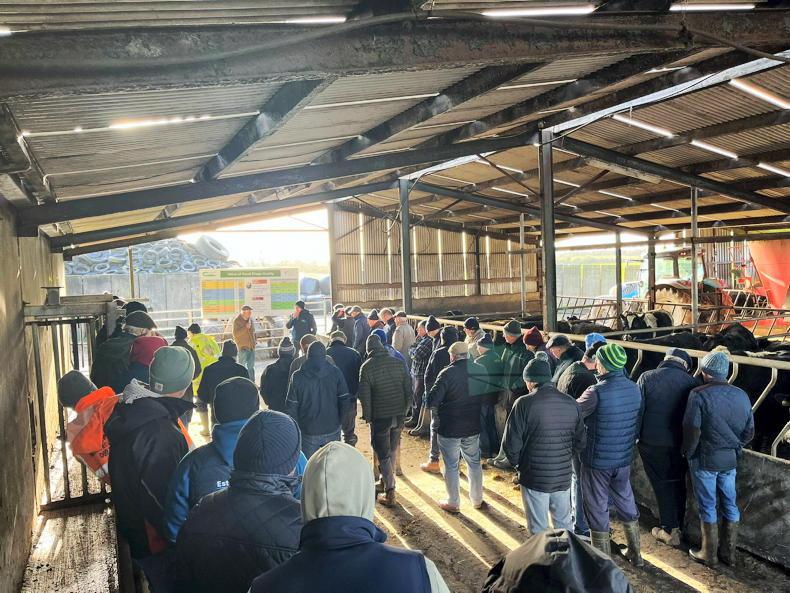There are four factors that will contribute to what ‘gestation length’ index figure your bull starts out with and how it changes over time. They are backpedigree, genotype, foreign data and Irish data.
The first ‘gestation length’ index that a bull will receive is called a ‘Parent Average’ index.
As the name suggests, it is an average figure that is calculated from the index figures that his sire & dam have at the time of his birth.
If the index figure of a bull’s close relative moves up or down significantly, then this will also affect the index figure of the bull himself.
When a sample of DNA (like hair or a straw of semen) is sent off and the genotype comes back, this will alter the figure that the bull got in his first evaluation run, which would have been through his ‘parent average’ as explained above.
As a result, there could be a difference in a bull’s ‘gestation length’ from his very first evaluation compared to the one after the genotype has been included.
If a bull already has an index for gestation length
in another country and this data is sent to ICBF, then this will also have an impact on shaping his ‘gestation length’ index in Ireland.
ICBF routinely gets files of such index values from countries such as the UK and France.
The gestation length of his own calves born on Irish farms is the final piece of the jigsaw that makes up a bull’s gestation length’ index.
1. Why do you participate in the WHPR programme?
I participate in the WHPR programme to compare the results within my herd and make decisions to improve the weaknesses identified for the future.
2. Have you had bull enquiries through the Stockbull Finder?
Once customers make contact, they will look up the bull on ‘Bull Search’ to get the star rating and see he has been genotyped.
The Stockbull Finder could get a breeder new customers. To-date, my customers are mostly through repeat business and recommendations.
3. What are your thoughts on the BDGP & BEEP schemes?
Both schemes have a lot of merit for breeding beef cattle in an efficient sustainable way, but the market situation is all about finishing the dairy calves to beef. Until the market adjusts it will be difficult to sell.
4. Genotyping can confirm parentage and tell us more about an animal’s genetics. What do you think of it?
Genotyping will be very important to the future of beef cattle.
By identifying the good genes that are resistant to TB, Pneumonia, IBR and RSP, Johne’s Elisa, Leptospira, and Salmonella, it reduces the need to use antibiotics for secondary infections in beef production.
5. What are the three most influential AI Sires in the Parthenaise breed, in your opinion?
Its a very difficult question to answer. Breeding cattle is such a slow process. I look at the ICBF star rating and then look at the bull.
If I like him, I use him, usually through AI if available. I could be disappointed with the results and try again. France has a large pool of new bulls with endless potential. Restrictions on AI straw access could be a problem.
I am always looking for a new Parthenaise outcross.
6. If you had to pick one highlight of your pedigree breeding journey to-date, what would it be?
I have had two reserve champions in the Tullamore Show.
I’ve bred Parthenaise bulls that have been purchased by respected established Parthenaise breeders, which encourages me to keep going to breed one good enough for AI.
7. What advice would you give to a new pedigree breeder starting out?
A new Parthenaise pedigree breeder must show their cattle in agricultural shows to get their name out there,
Parthenaise pedigree cattle breeding is a slow burner. It will take time, patience and investment to grow your herd.
Buying the best foundation stock is an expensive process, but embryo transfer is another way of getting it.
ICBF star ratings are a must for selling your Parthenaise cattle. Every breeder must use AI to get the best blood-lines into their herd.
Read more
How is a bull’s calving ease figure calculated?
Beef Plan outlines 13 concerns it wants addressed
There are four factors that will contribute to what ‘gestation length’ index figure your bull starts out with and how it changes over time. They are backpedigree, genotype, foreign data and Irish data.
The first ‘gestation length’ index that a bull will receive is called a ‘Parent Average’ index.
As the name suggests, it is an average figure that is calculated from the index figures that his sire & dam have at the time of his birth.
If the index figure of a bull’s close relative moves up or down significantly, then this will also affect the index figure of the bull himself.
When a sample of DNA (like hair or a straw of semen) is sent off and the genotype comes back, this will alter the figure that the bull got in his first evaluation run, which would have been through his ‘parent average’ as explained above.
As a result, there could be a difference in a bull’s ‘gestation length’ from his very first evaluation compared to the one after the genotype has been included.
If a bull already has an index for gestation length
in another country and this data is sent to ICBF, then this will also have an impact on shaping his ‘gestation length’ index in Ireland.
ICBF routinely gets files of such index values from countries such as the UK and France.
The gestation length of his own calves born on Irish farms is the final piece of the jigsaw that makes up a bull’s gestation length’ index.
1. Why do you participate in the WHPR programme?
I participate in the WHPR programme to compare the results within my herd and make decisions to improve the weaknesses identified for the future.
2. Have you had bull enquiries through the Stockbull Finder?
Once customers make contact, they will look up the bull on ‘Bull Search’ to get the star rating and see he has been genotyped.
The Stockbull Finder could get a breeder new customers. To-date, my customers are mostly through repeat business and recommendations.
3. What are your thoughts on the BDGP & BEEP schemes?
Both schemes have a lot of merit for breeding beef cattle in an efficient sustainable way, but the market situation is all about finishing the dairy calves to beef. Until the market adjusts it will be difficult to sell.
4. Genotyping can confirm parentage and tell us more about an animal’s genetics. What do you think of it?
Genotyping will be very important to the future of beef cattle.
By identifying the good genes that are resistant to TB, Pneumonia, IBR and RSP, Johne’s Elisa, Leptospira, and Salmonella, it reduces the need to use antibiotics for secondary infections in beef production.
5. What are the three most influential AI Sires in the Parthenaise breed, in your opinion?
Its a very difficult question to answer. Breeding cattle is such a slow process. I look at the ICBF star rating and then look at the bull.
If I like him, I use him, usually through AI if available. I could be disappointed with the results and try again. France has a large pool of new bulls with endless potential. Restrictions on AI straw access could be a problem.
I am always looking for a new Parthenaise outcross.
6. If you had to pick one highlight of your pedigree breeding journey to-date, what would it be?
I have had two reserve champions in the Tullamore Show.
I’ve bred Parthenaise bulls that have been purchased by respected established Parthenaise breeders, which encourages me to keep going to breed one good enough for AI.
7. What advice would you give to a new pedigree breeder starting out?
A new Parthenaise pedigree breeder must show their cattle in agricultural shows to get their name out there,
Parthenaise pedigree cattle breeding is a slow burner. It will take time, patience and investment to grow your herd.
Buying the best foundation stock is an expensive process, but embryo transfer is another way of getting it.
ICBF star ratings are a must for selling your Parthenaise cattle. Every breeder must use AI to get the best blood-lines into their herd.
Read more
How is a bull’s calving ease figure calculated?
Beef Plan outlines 13 concerns it wants addressed










SHARING OPTIONS